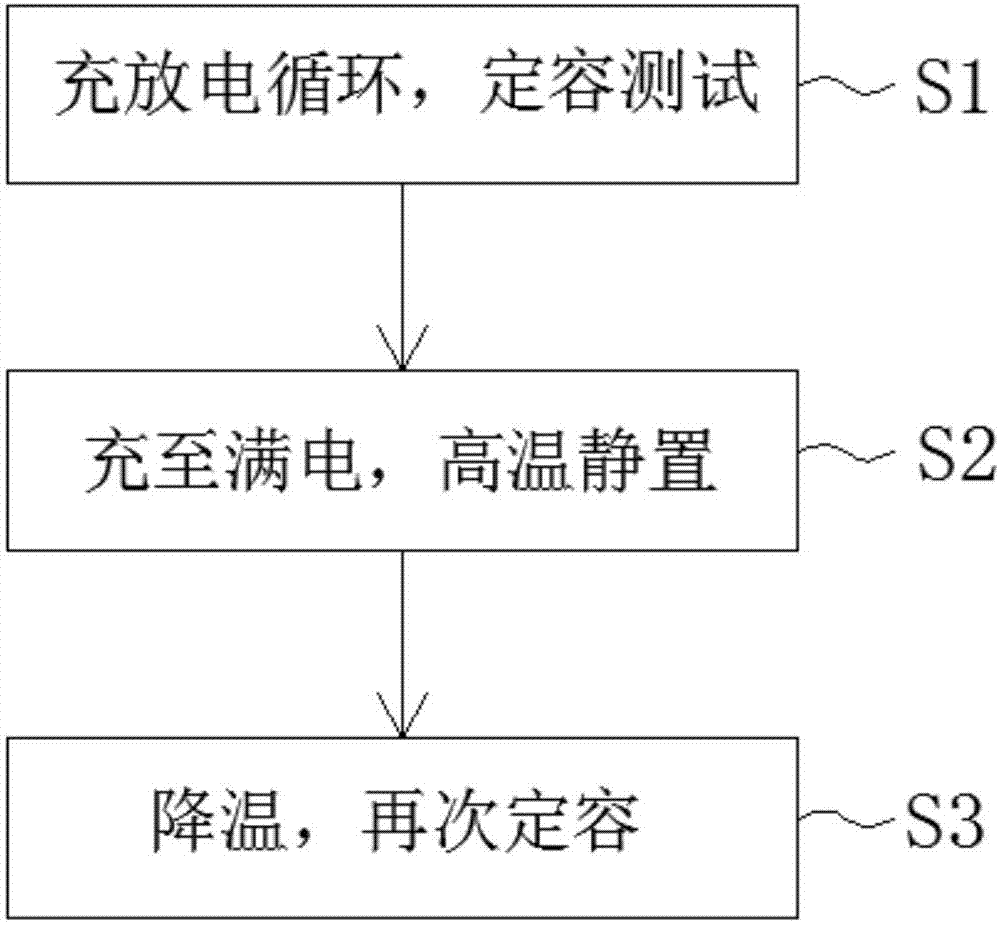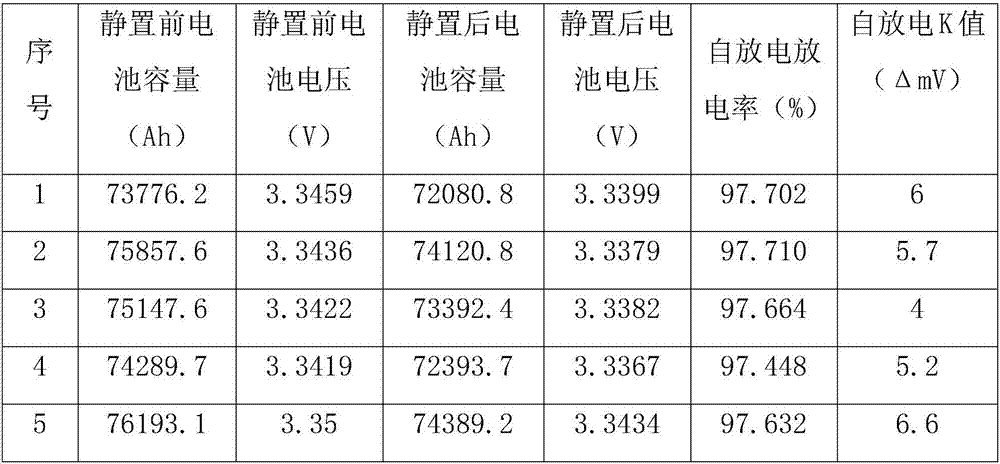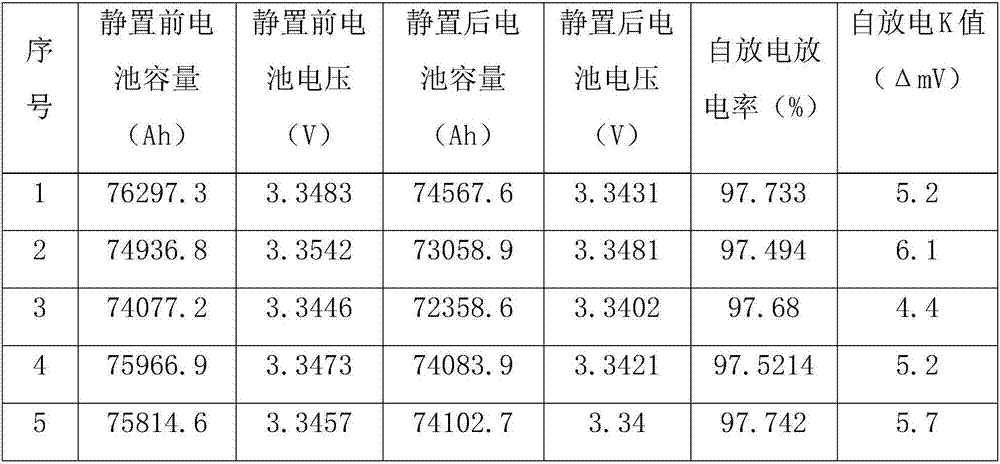Self-discharge test method for lithium ion battery
A lithium-ion battery and testing method technology, which is applied in the field of self-discharge testing of lithium-ion batteries, can solve problems such as long medium-discharge time and complicated procedures, and achieve accurate self-discharge conditions and ensure accuracy.
- Summary
- Abstract
- Description
- Claims
- Application Information
AI Technical Summary
Problems solved by technology
Method used
Image
Examples
Embodiment approach 1
[0032] Step S1: Randomly select 5 formed batteries with a rated capacity of 72Ah. First cycle the battery for 8 times. After the cycle is completed, adjust the battery to constant capacity. The cycle conditions are: in the constant capacity workshop (25±2°C) Under normal conditions, the charge-discharge cycle is carried out with a current of 1C; after the cycled battery is left to stand for 3 hours, the volume is constant. Discharge 0.5C to 2.5V, and then use 0.1C to discharge completely, that is to complete the constant volume.
[0033] Step S2: Charge the battery with a constant current of 0.5C to a fully charged state, then transfer the battery to a high-temperature room at 45°C, and store it for 7 days.
[0034] Step S3: Transfer the static battery to the constant volume room. After static for 8 hours, discharge the battery, then fully charge it, and constant volume. Refer to the second step for discharge conditions and constant volume conditions.
[0035] Table 1. Batter...
Embodiment approach 2
[0039] Step S1: Randomly select 5 formed batteries with a rated capacity of 72Ah. First cycle the battery 5 times. After the cycle is completed, constant the capacity of the battery. The cycle conditions are: in the constant capacity workshop (25±2°C) Under normal conditions, the charge-discharge cycle is carried out with a current of 1C; after the cycled battery is left to stand for 3 hours, the volume is constant. Discharge 0.5C to 2.5V, and then use 0.1C to discharge completely, that is to complete the constant volume.
[0040] Step S2: Charge the battery with a constant current of 0.1C to a fully charged state, then transfer the battery to a high temperature room at 45°C, and store it for 10 days.
[0041] Step S3: Transfer the static battery to the constant volume room. After static for 8 hours, discharge the battery, then fully charge it, and constant volume. Refer to the second step for discharge conditions and constant volume conditions.
[0042] Table 2. Battery self...
PUM
 Login to View More
Login to View More Abstract
Description
Claims
Application Information
 Login to View More
Login to View More - R&D
- Intellectual Property
- Life Sciences
- Materials
- Tech Scout
- Unparalleled Data Quality
- Higher Quality Content
- 60% Fewer Hallucinations
Browse by: Latest US Patents, China's latest patents, Technical Efficacy Thesaurus, Application Domain, Technology Topic, Popular Technical Reports.
© 2025 PatSnap. All rights reserved.Legal|Privacy policy|Modern Slavery Act Transparency Statement|Sitemap|About US| Contact US: help@patsnap.com



